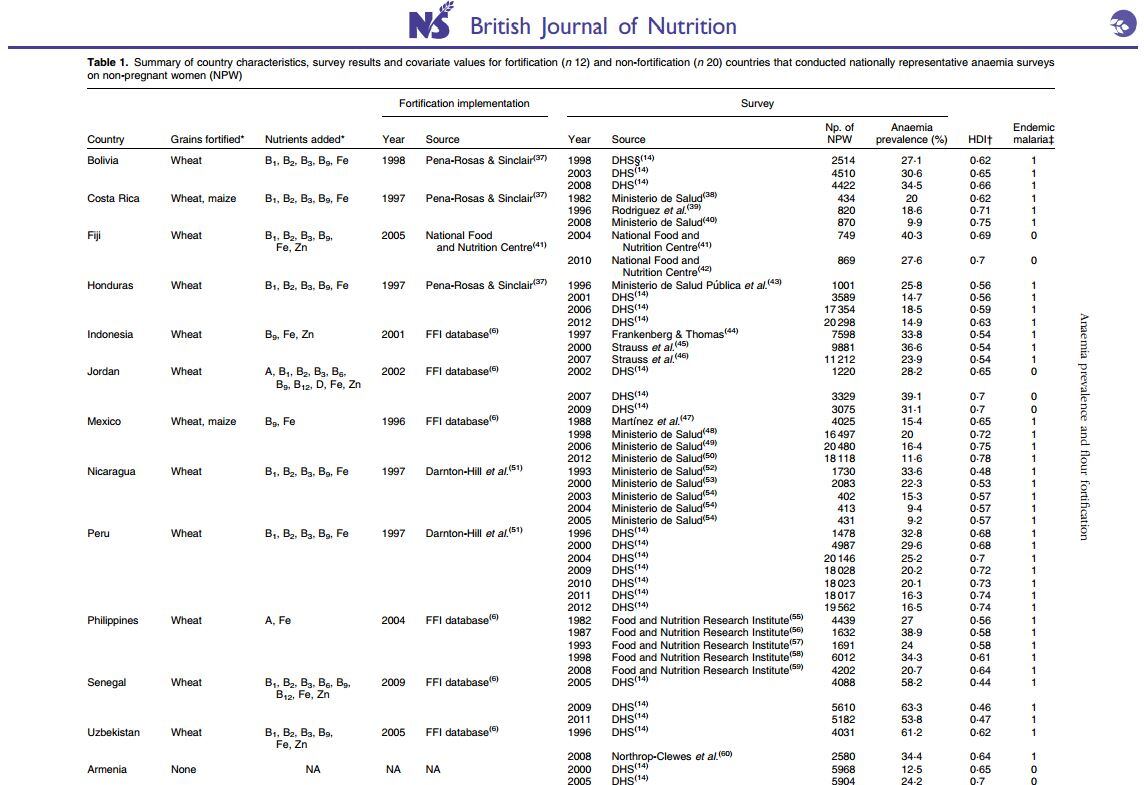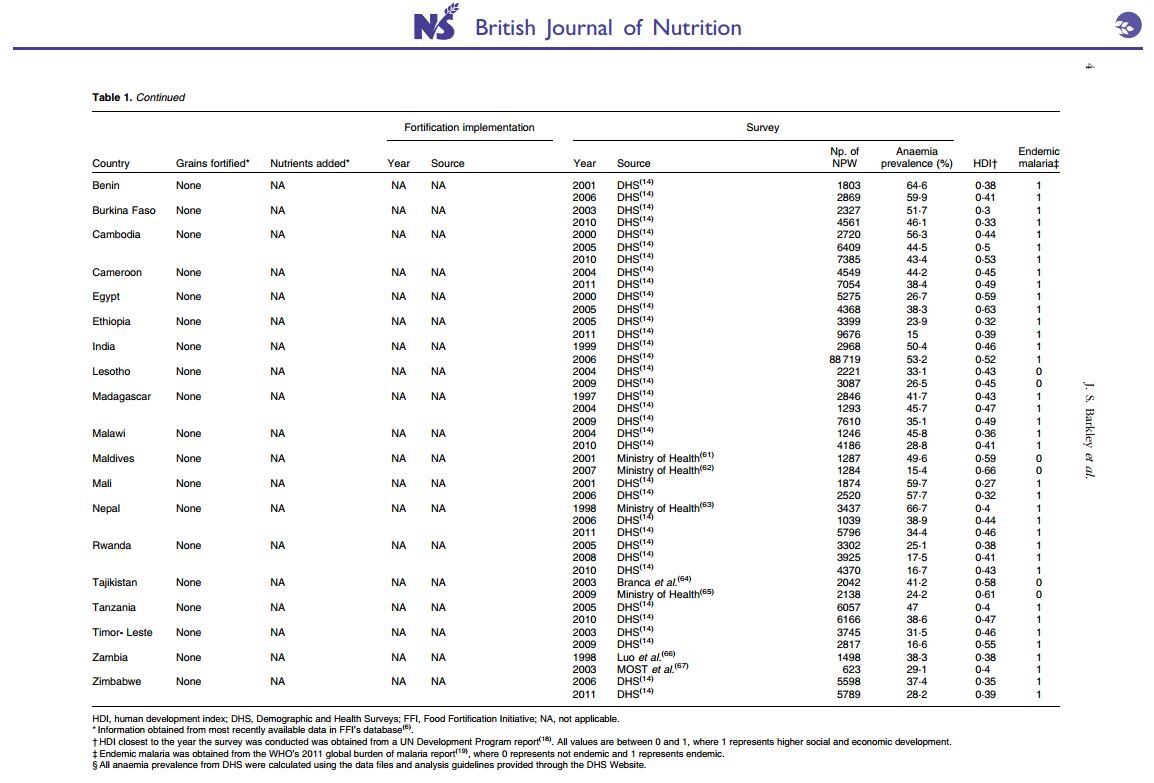Researchers from the Food Fortification Initiative and Emory University in the US looked at the impact of fortifying wheat flour alone or in combination with maize flour with at least iron, folic acid, vitamin A or vitamin B12.
Looking at the results of national nutrition surveys and the WHO Vitamin and Mineral Nutrition Information System database for non-pregnant women they found that in fortifying countries anaemia prevalence had decreased significantly, while it remained unchanged in countries that did not.

Although 81 countries mandate fortification of wheat flour alone or in combination with maize flour, the researchers said evidence on the effectiveness of such schemes was “equivocal”. They included 12 countries with available pre- and post-fortification data and 20 countries that had never fortified.
After adjustment for human development index (HDI) and malaria – non-nutritional causes of anaemia – each year of fortification saw a 2.4% reduction in anaemia prevalence compared with each previous year.
“As more anaemia surveys are conducted using consistent methodology, the association between flour fortification and anaemia prevalence will be better elucidated, and stronger support for the effectiveness of flour fortification may be achieved,” the researchers wrote.
Greater research was also needed on the type of iron used to fortify, with past research suggesting low bioavailable iron compounds were typically used.

The researchers said if this was true there could be “room to improve” hemoglobin concentration through more bioavailable iron fortification.
A global problem
According to one 2013 paper,estimated global prevalence of anaemia declined by 5% points or less between 2011 and 1995. This equated to a drop from 47 to 43% in pre-school children, 33 to 29% in non-pregnant women and 43 to 38% in pregnant women.
Yet the researchers said this remained a major public health problem in many regions, particularly in low- to middle income countries where prevalence rates exceeded 40% for pre-school children in Central and West Africa, East Africa and Southern Africa, South Asia, and Oceania and for non-pregnant and pregnant women of reproductive age in Central and West Africa and South Asia.
To fortify or not to fortify
The UK has been debating whether to fortify flour with folic acid since the 90s to combat infant neural tube defects. Critics suggested that while folate intakes must be upped, flour was not the vehicle to do so as it could encourage greater consumption of products high in sugar, fat and salt.
The UK's Department of Health (DoH) said it was waiting for the results of the National Diet and Nutrition Survey as well as research commissioned on new ways to encourage women to increase their intake before it made its decision.
Source: British Journal of Nutrition
Published online ahead of print, doi:10.1017/S0007114515001646
“Anaemia prevalence may be reduced among countries that fortify flour”
Authors: J. S. Barkley, K. S. Wheeler and H. Pachon
